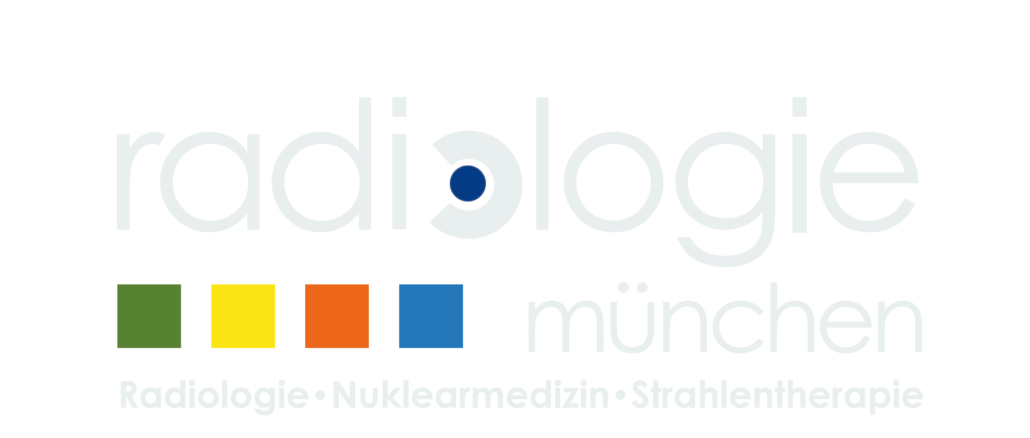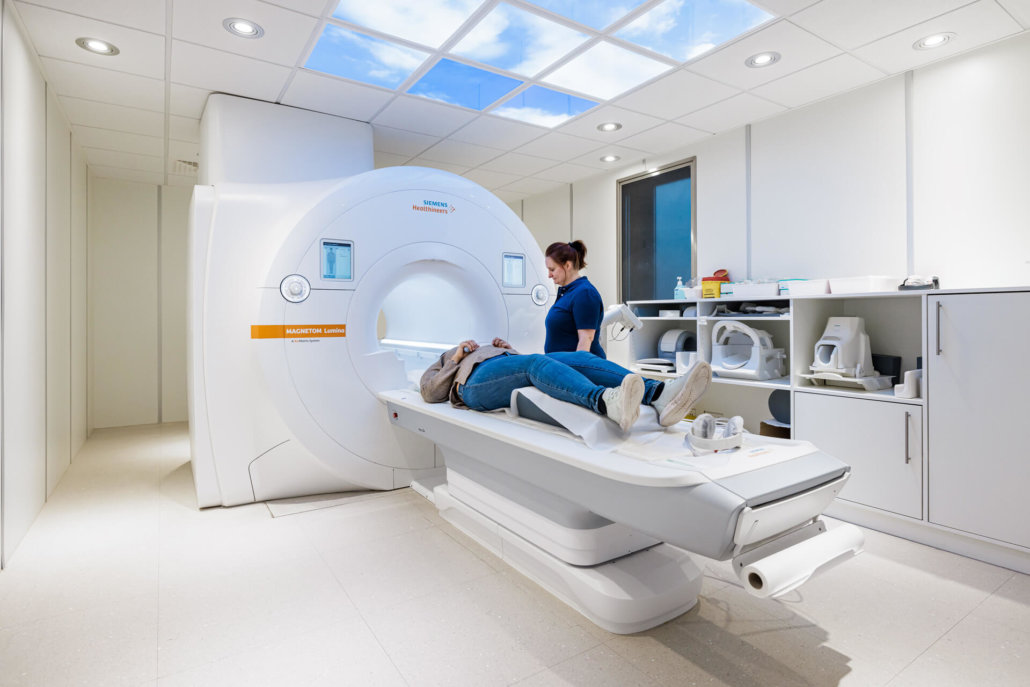Very accurate images of the small intestine
While the rest of the digestive tract can be examined very well with a mirror examination (gastroscopy or colonoscopy), the small intestine can only be partially reached with conventional diagnostics. MR-Sellink, also called MRI enterography, offers a minimally invasive way to check the small bowel mucosa for disease, inflammation or tumors
approx. 30 min
Actual examination time
2-3 h
Duration of the entire practice visit
Where can you have an MR Sellink performed in Munich?
Our team of specialists is one of the leading experts in diagnostics using MR-Sellink. The many years of experience with the technical procedure of enterography by means of MRI and the related innovative further developments serve above all the optimal representation of pathological changes in the small intestine. Just ask for an appointment at one of our locations!

What is an MR according to Sellink?
An MR sellink is a type of MRI enterography and clarifies symptoms in the small bowel. In particular, the condition of the mucosa of the small intestine is assessed. The presence of adhesions (so-called brides), inflammatory lesions (ulcers) or protrusions can indicate various clinical pictures. Crohn’s disease of the small intestine, for example, which is otherwise difficult to detect, can be diagnosed in this way and the success of drug therapy can be monitored well.
Diverse disease diagnostics possible
Sellink MRI of the small intestine also produces detailed images of fistulas, abscesses, and other disease processes affecting the upper digestive tract. Both constrictions (stenoses) and tumors of the small intestine can be easily detected in this way. Especially in assessing the location, size and growth pattern of such tumors, small bowel MRI offers very good results. Decisions about possible treatment can be made reliably on the basis of this imaging; in this respect, MRI is superior to other examination methods such as ultrasound or computer tomography.
MR-Sellink for the diagnosis of gluten intolerance
A now increasing area of application is the clarification of unattributable diarrhea in patients. Bleeding or other reactions to food are often based on intolerances or allergies to food or nutritional supplements. For example, contrast-enhanced MRI of the small intestine may be useful in cases of suspected gluten intolerance to rule out other causes of diarrhea and to visualize a chronic change in the mucosal relief of the small intestine – an important consideration for future dietary planning for the patients studied.
What do you need to know before the examination?
Preparation for an MR sellink of the small bowel is only slightly more involved than for other MRI examinations. To make the assessment of the small intestine as good and accurate as possible, you should avoid certain food components the day before the examination:
- No fatty foods if possible
- Little to no dairy products
- No legumes or whole grains
Very important, on the other hand, is a good fluid intake. Tea, water and coffee are suitable for this purpose.
Laxative measures are only required for the examination if the colon is also to be assessed. As a rule, it is sufficient if you remain fasting on the day of the examination.
Caution: As with other MRI examinations, patients with a pacemaker or a built-in cardio-defibrillator (ICD) may only be examined after consultation with the cardiologist under certain conditions; permanently implanted neurostimulators or a non-removable insulin pump as well as dental prostheses with magnetic holders are a contraindication to the examination. In pregnancy, especially in the 1st trimester, a strict indication is made taking into account the clinical urgency.
If you have an intolerance or allergy to a contrast medium or a component therein, you should inform the doctor of this during the preliminary consultation.
How does an MR sellink work?
As with any radiological examination, a discussion between one of our physicians and you, the patient, takes place at the beginning. This mainly involves questions about the areas to be examined in the abdomen, the associated procedures, possible risks and, of course, the appropriate preparations.
The examination starts about an hour before the actual tomography in our practice , because you need to drink a contrast agent. This serves to unfold the empty small intestine. Since this takes a longer time, the remedy must be drunk slowly over a period of 45-60 minutes.
In rare cases, the large intestine is also filled with contrast medium via the rectum after positioning in the MRI unit if the clinical question is appropriate.
The actual MRI examination takes about 25 minutes. Here, the entire abdominal cavity is always examined.
The parasympatholytic drug “Buscopan” will be administered to you via a venous line prior to the MRI Sellink examination. This suppresses the intestinal motor function for the duration of the examination. This prevents the “normal” movement of the bowel, known as peristalsis, from causing blurring in the image. This measure is essential for the quality of the images. In the consultation with the doctor before the examination, it is clarified whether there are any contraindications to the administration of this medication.
Virtual colonoscopy
Information on MRI-guided colonoscopy
MRI
Interesting facts about magnetic resonance imaging (MRI)
Bowel diagnostics
Back to the overview of bowel diagnostics

